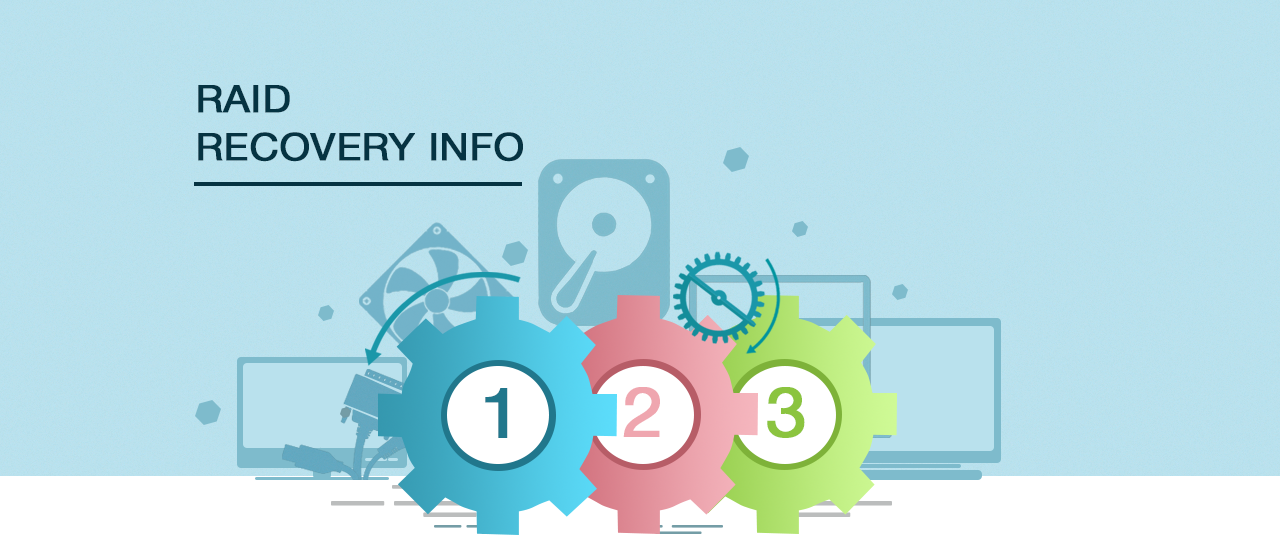
 |
| RAID DATA RECOVERY IN SEVERAL STEPS |
| When a RAID fails, there are certain actions you can take that will make the problem better and other actions you can take that will make the problem worse. In this brief tutorial, we’ll walk through some of the steps that will increase your chances of a successful RAID data recovery. |
|
STEP ONE: DISCONNECT THE RAID MEMBER DISKS |
STEP TWO: IMAGE THE DISK |
|
| For a hardware RAID, you will want to remove all the disks from the RAID and label them. Label the cables and ports as well, in case you need to physically or virtually reassemble the RAID. |
There are two reasons to create an image of the RAID member disks.
First, it will allow you to salvage any disks that are failed or failing
without causing any further data loss. Second, it will allow you to try
different configurations and data recovery methods without corrupting
the data on the RAID volume. Forcing a RAID into an invalid
configuration can damage the file structure or corrupt the data. To
create an image, connect the disk to a non-RAID disk controller, such as
a hard drive dock, enclosure or a normal hard drive bay on your
computer. |
|
|
STEP THREE: PREPARE BACKUP MEDIA |
STEP FOUR: REBUILD THE RAID FROM THE DISK IMAGES |
|
| You should never save recovered data onto the same physical disk that it was recovered from. So, you will need a blank drive that can accommodate the data you want to recover. | Using a professional data recovery tool, use the disk images to build your RAID virtually. Use the same RAID level and parameters that your physical RAID used. Be sure you enter the correct block size, start offset and disk order. If you seem to be having mixed results, it’s likely that one or more of the parameters are incorrect. Once a valid file system is recognized, you should be able to copy the data onto your backup media. | |
|
|
||
| OTHER TIPS | ||
|
||
| Back to the main page | ||